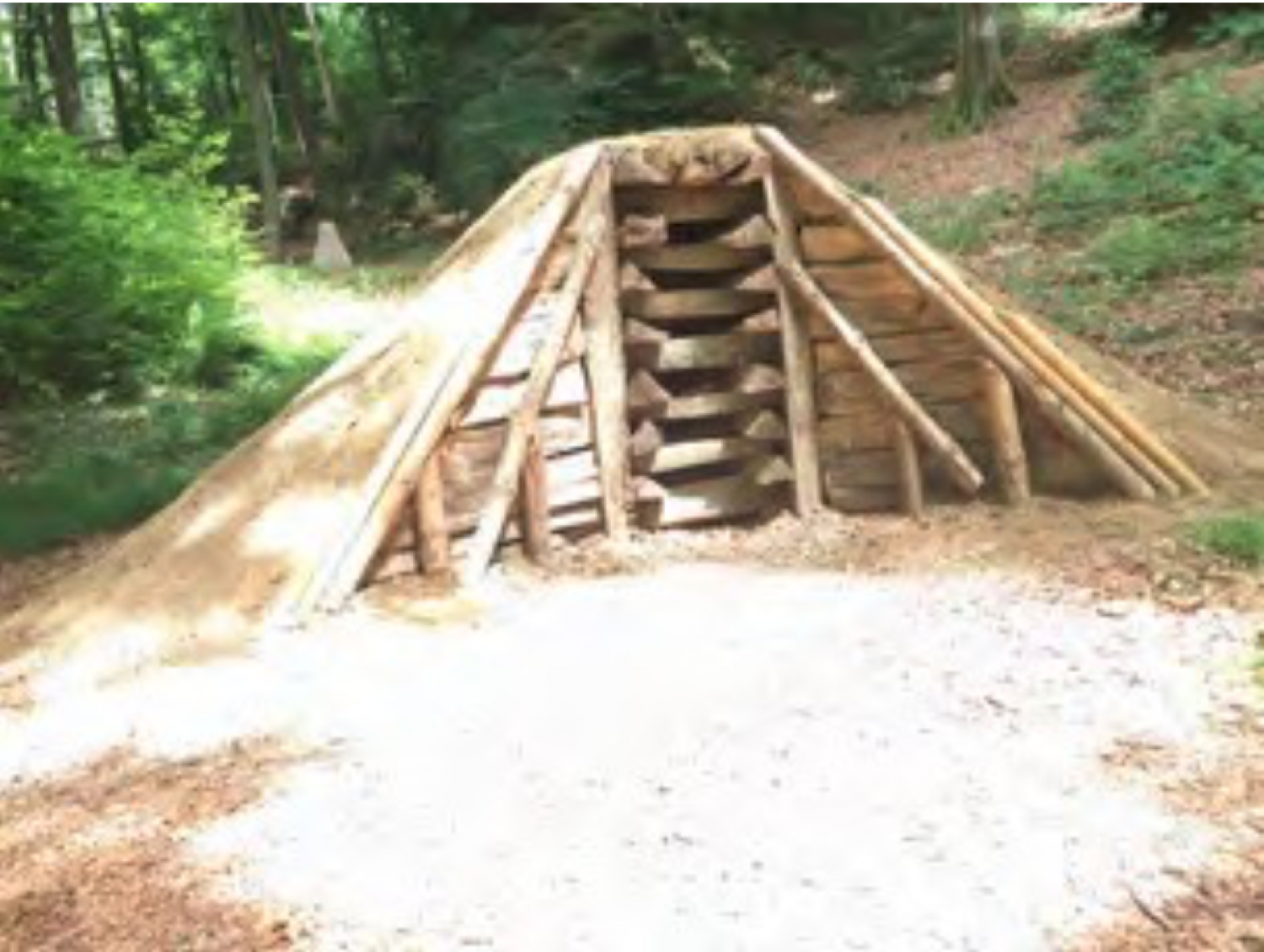Historical site: iron mining

The production of charcoal in our country took place in parallel to the production of iron. As early as the Iron Age, the Celts used charcoal to heat their bloomery hearths. The golden age of the charcoal piles, however, began around 1500 with the invention of the flow oven and continued until deep in the 18th century. Whole forests were cleared in order to meet the growing demand for charcoal. For example, around 20 kg charcoal can be obtained from 100 kg of wood! The appetite for fuel of the growing mountain industries, railroads, etc. ultimately could not be met and therefore the charcoal piles were replaced by coal mines, and our forests were able to recover. Because the slag drips or runs out, the earlier melting ovens were calling “run ovens” (Rennöfen, i.e. bloomery hearths). They were shaft furnaces with a jacket of clay and wind holes positioned above the ground. The ovens were layered with one part washed bog ore or bean ore and ten parts charcoal. In the “run” method, the ore is reduced to metal using the charcoal. As a result of the siliceous mixtures in the ore and the reaction with the furnace wall, a slag is produced containing iron which liquefies at 1200 °C and flows out of the lowest part of the oven. The remaining iron ore in the oven is reduced to elemental iron by the carbon monoxide. These slag-containing iron or soft steel lumps were called “Lupe” and were removed at the end of the process during demolition of the oven.